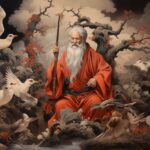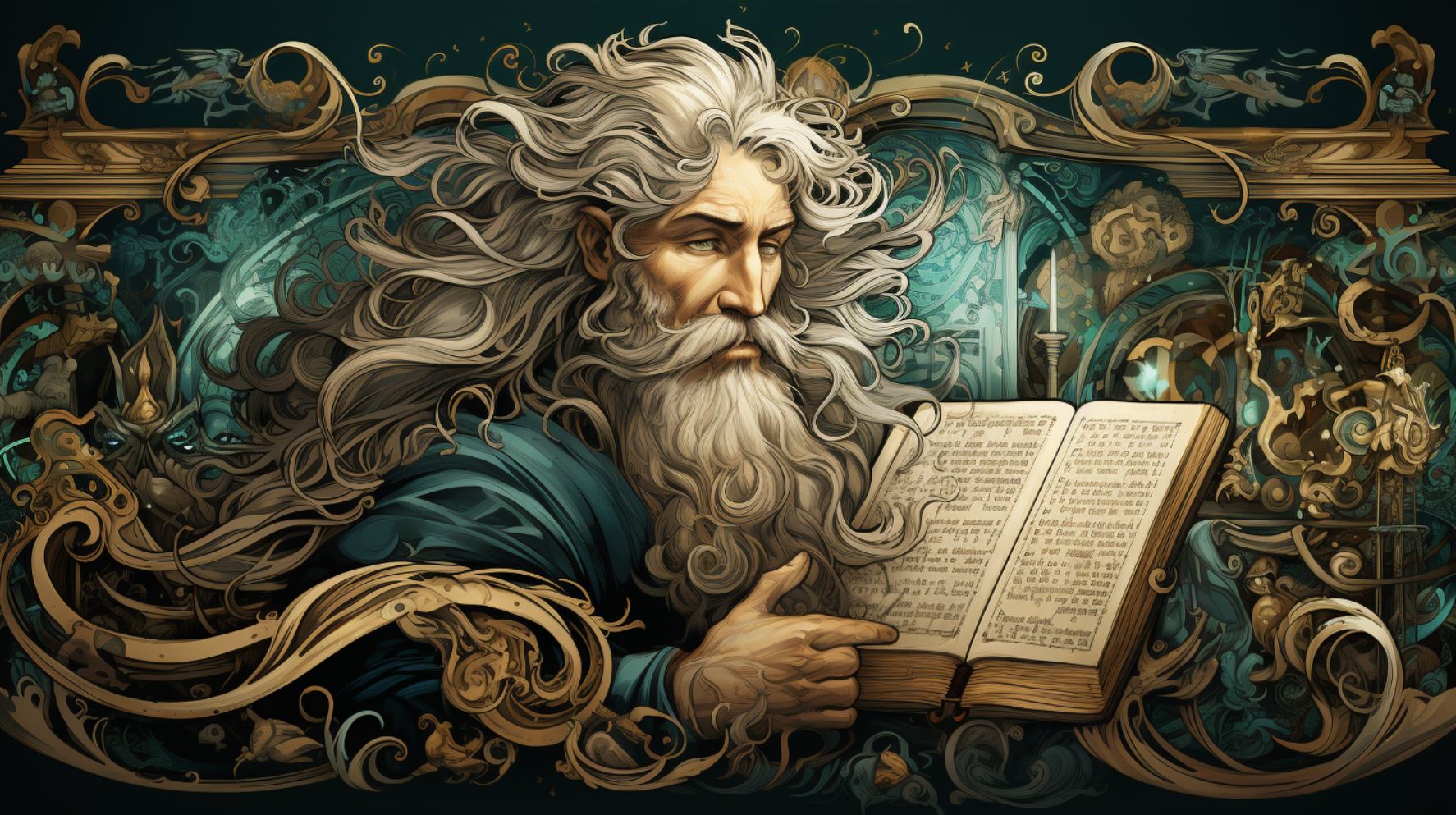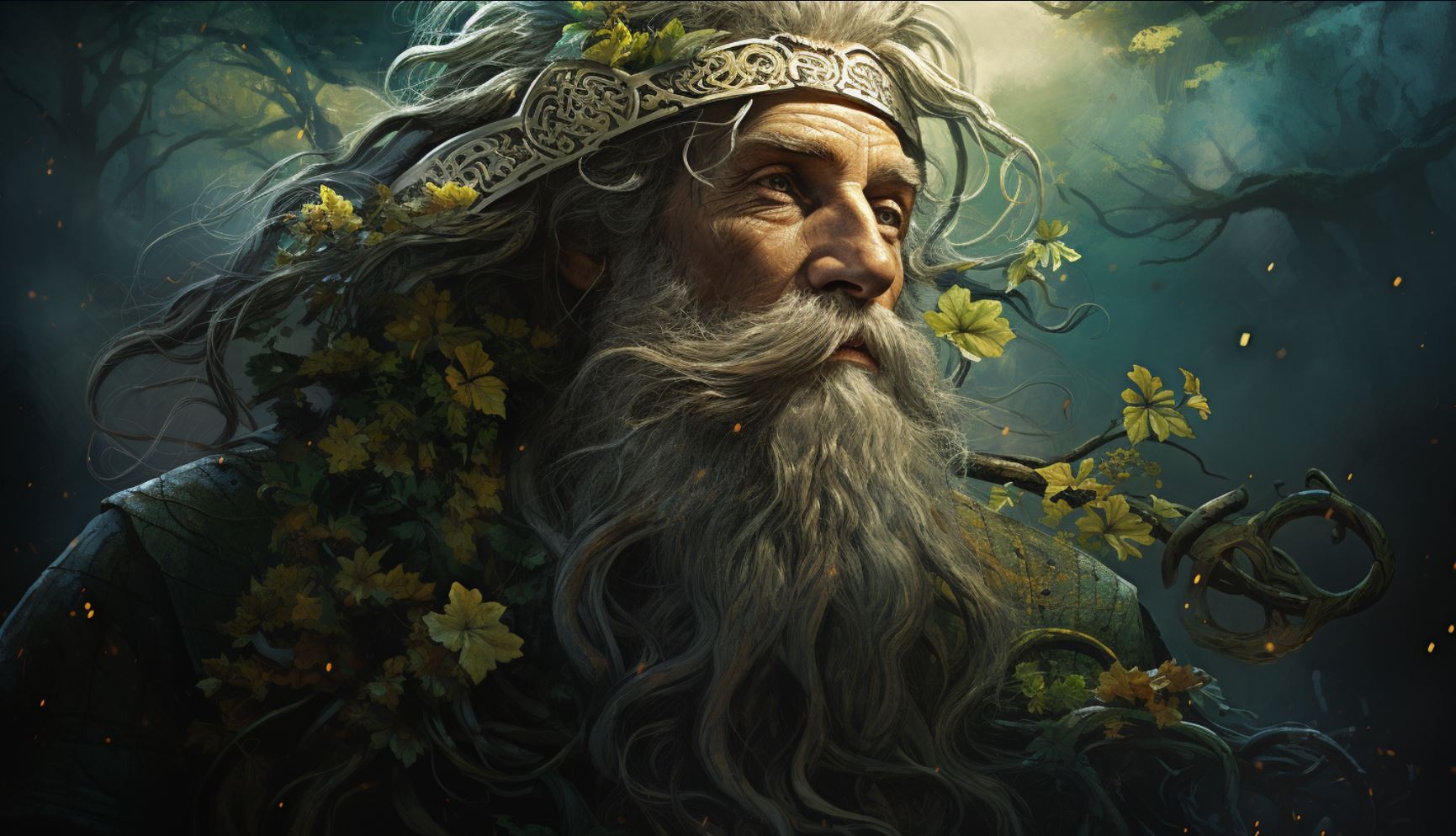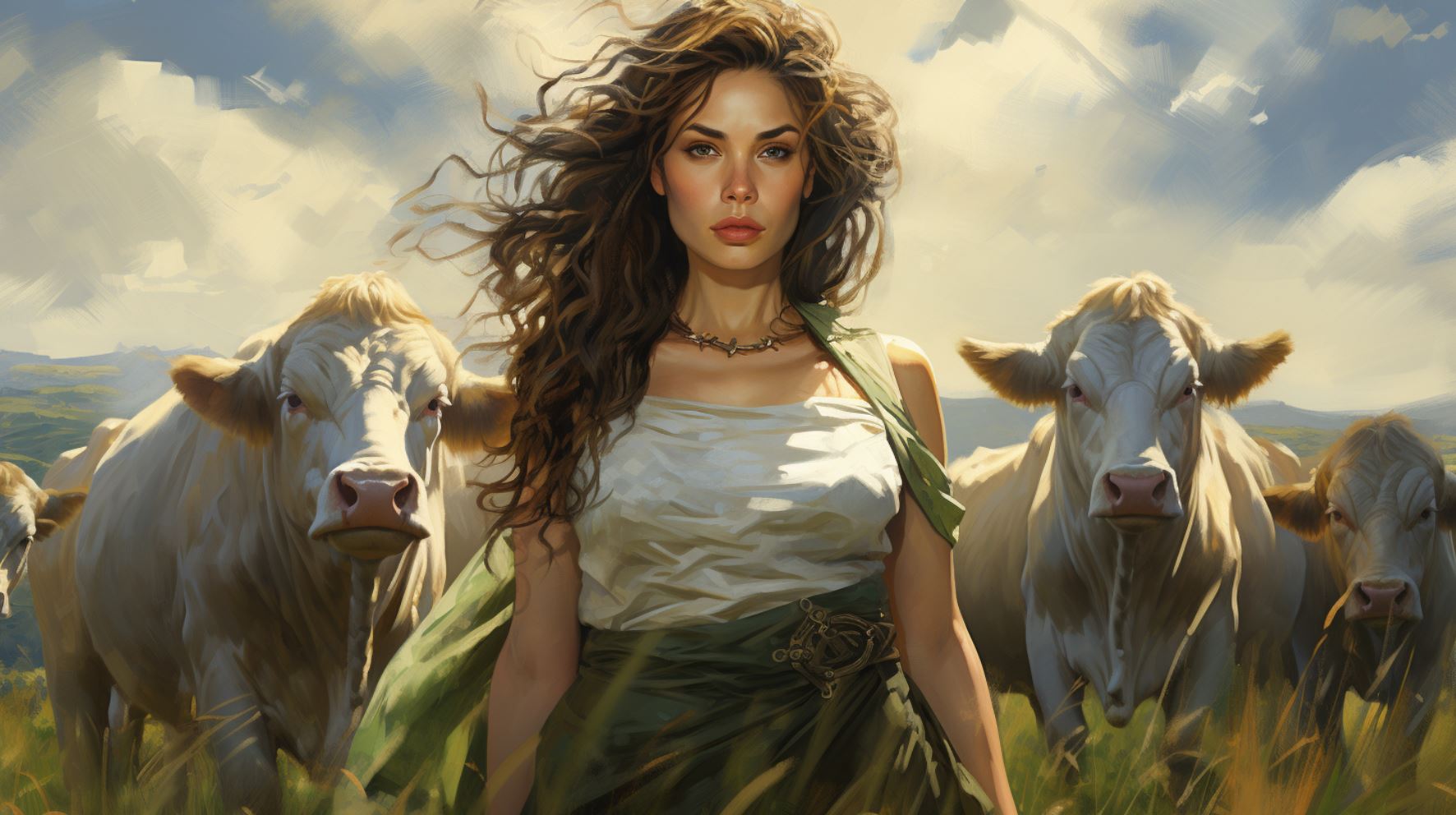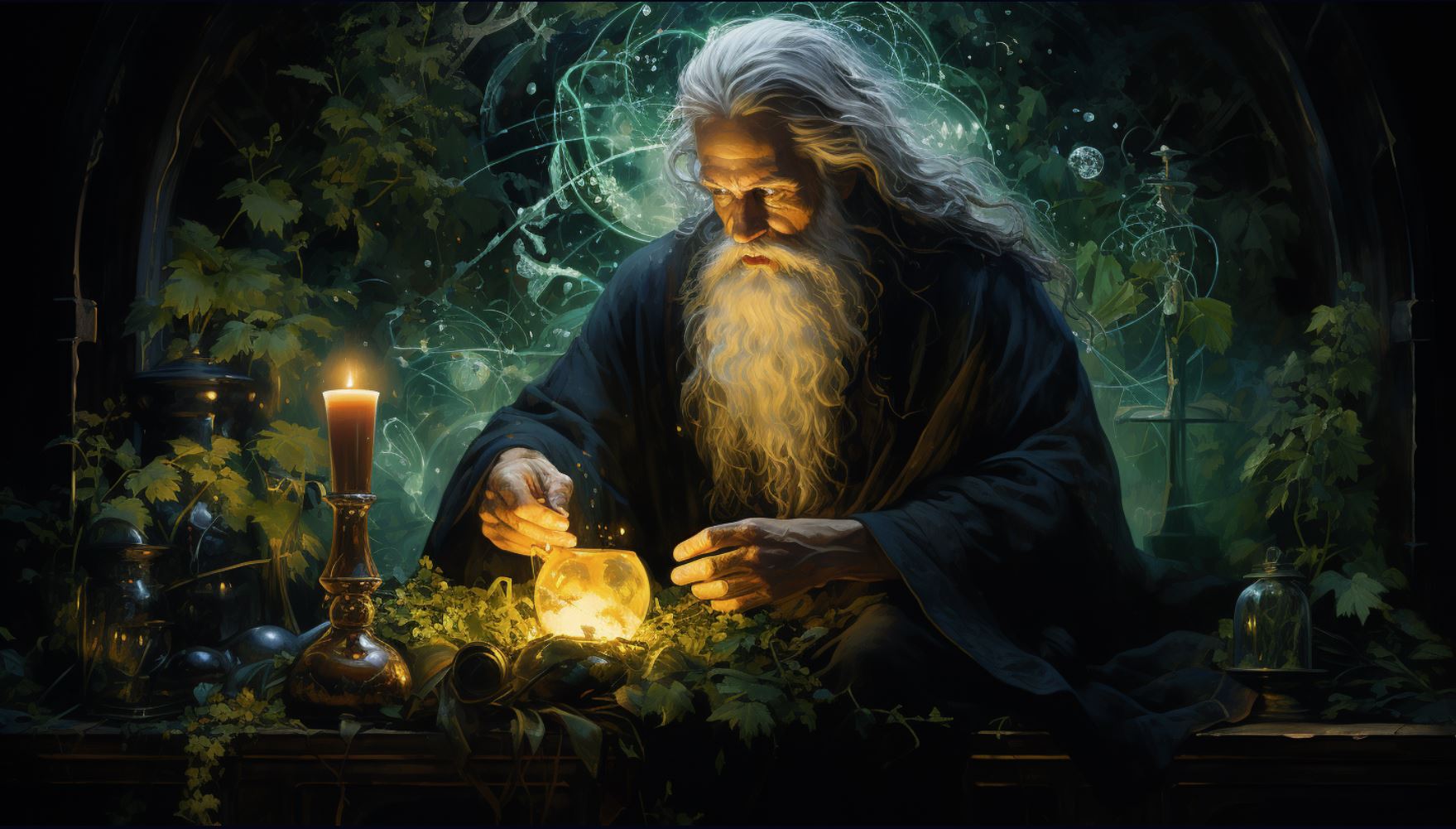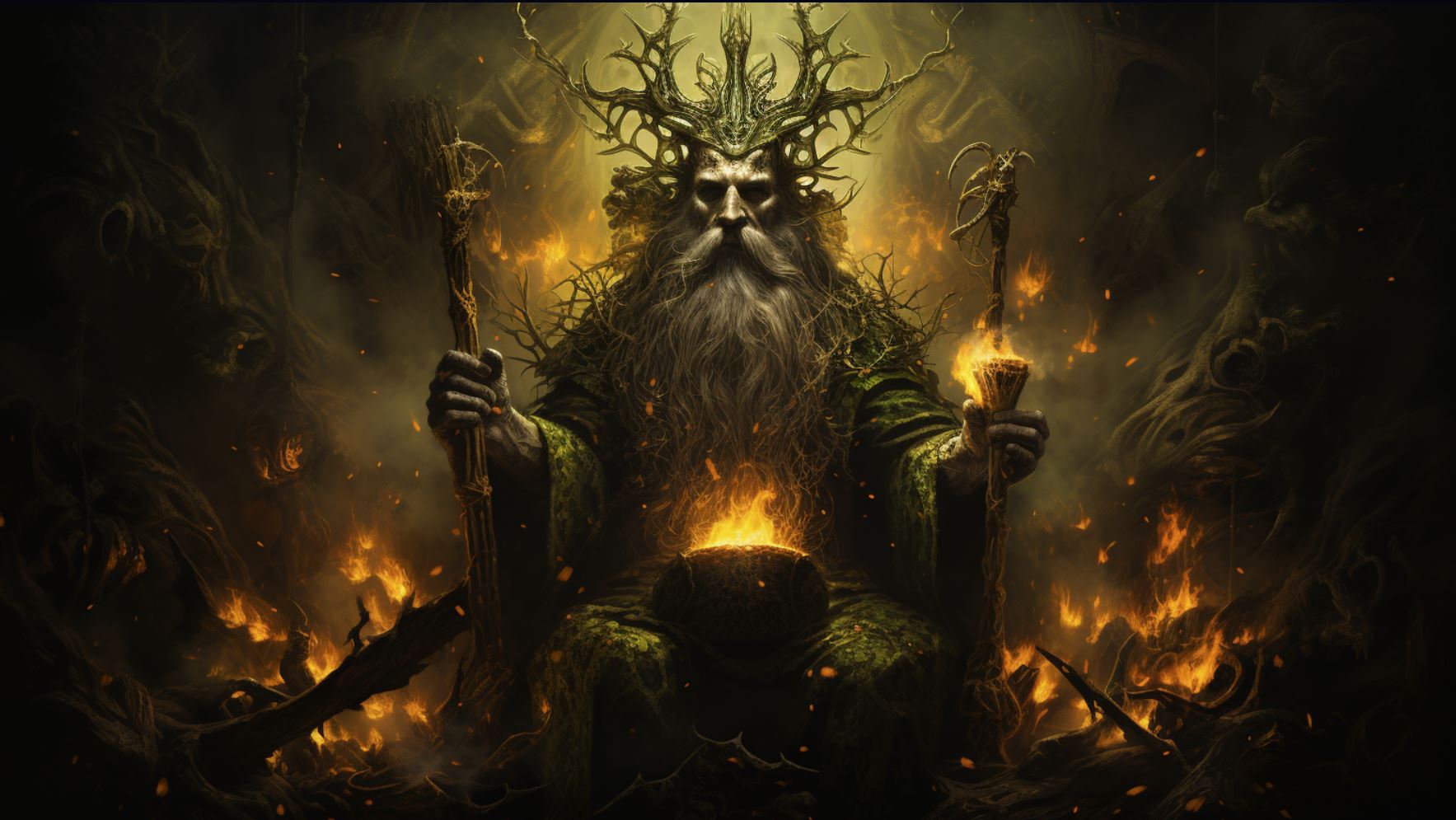Arawn Celtic God: Exploring the Mythology and Significance in American Context
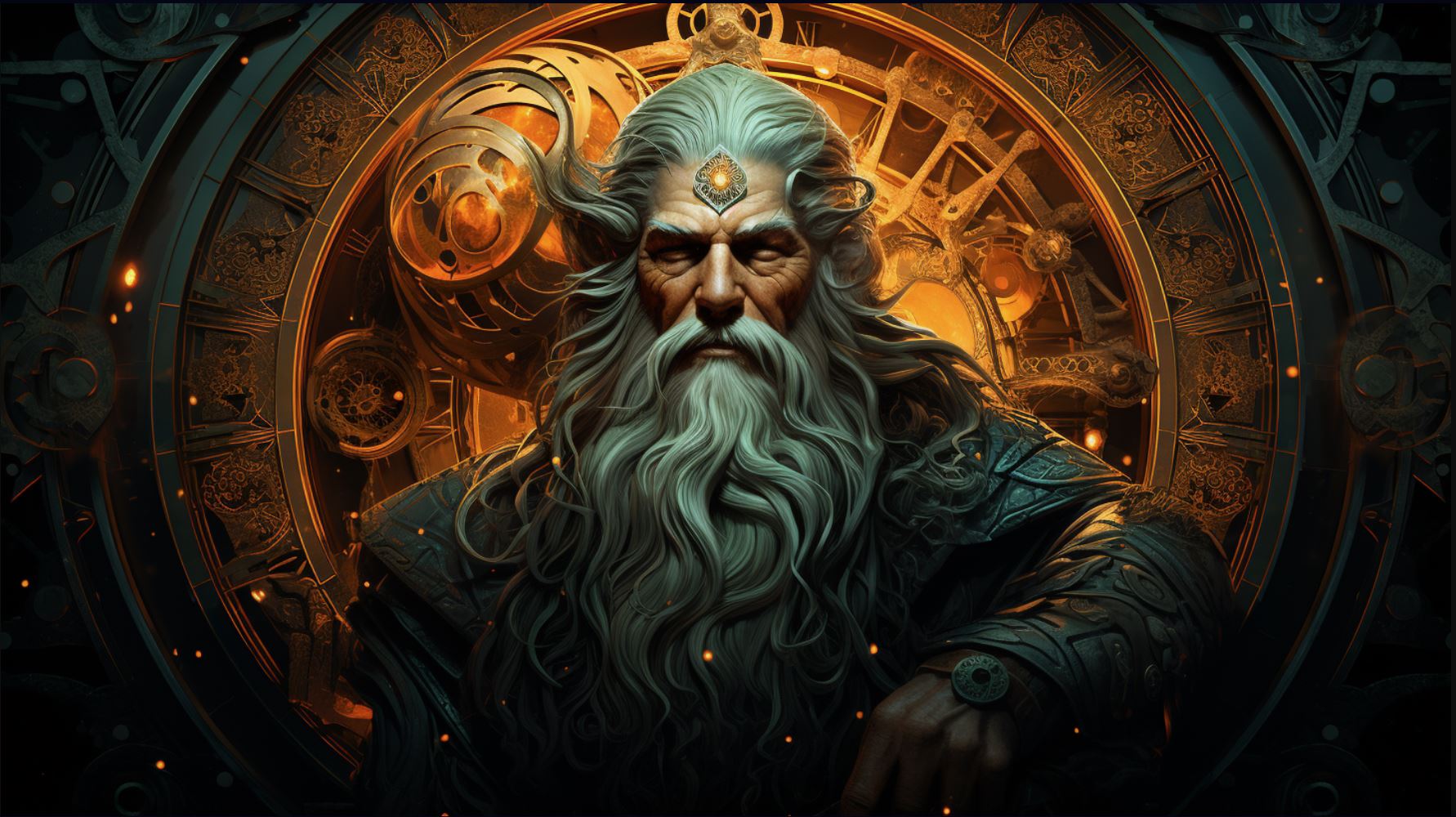
Arawn Celtic God, an important figure in Welsh mythology and folklore. As the king of Annwn, Arawn has a significant role in the Mabinogion, where he forms a friendship with Pwyll through a year-long exchange of places.
Arawn’s association with Pwyll and the battles fought, such as the one against Hafgan, showcases his prominence. Additionally, Arawn’s connection to the Cŵn Annwn, the dogs of Annwn, and his influence in Arthurian legend and contemporary literature highlight his impact.
A possible connection to the Gaulish god Cernunnos adds depth to the exploration of Arawn’s character.
Arawn Celtic God: Exploring the Mythology
Arawn, a significant figure in Celtic mythology, holds a prominent role in Welsh folklore and legends. This section delves into the origins and symbolism of Arawn, shedding light on his mysterious persona.
Additionally, we will explore the various roles Arawn fulfills within Celtic mythology, highlighting his importance in the ancient tales.
Origins and Symbolism of Arawn
Arawn’s origins are deeply rooted in Welsh mythology, specifically as the ruler of the kingdom of Annwn. While his precise origins remain shrouded in mystery, his association with Annwn places him in the realm of the otherworldly.
As a divine entity, Arawn symbolizes the balance between life and death, embodying the cycle of existence inherent in Celtic beliefs.
Moreover, Arawn’s symbolism extends beyond his role as a ruler.
He is often associated with the natural world, encompassing elements like hunting and the abundant harvest. This connection signifies Arawn’s deep ties to the land and its fertility, making him a significant deity revered by ancient Celts.
The Role of Arawn in Celtic Mythology
In Celtic mythology, Arawn’s role spans across various captivating narratives, allowing for a deeper understanding of his influence. His most notable appearance occurs in the first branch of the Mabinogion, where he forges a pact with Pwyll, resulting in a year-long exchange of places.
Throughout this period, Pwyll assumes the role of the lord of Dyfed, triumphing over Arawn’s rival, Hafgan.
Furthermore, this distinctive friendship between Arawn and Pwyll shapes their characters, showcasing the value of loyalty and camaraderie.
Arawn acts as a mentor figure to Pwyll, guiding him through challenges and offering wisdom during their interchange of roles.
As the venerated ruler of Annwn, Arawn’s presence extends beyond personal connections.
He becomes entangled in conflicts such as the theft of Ceridwen’s pigs by Gwydion, leading to the Battle of Annwn—a clash between opposing forces with far-reaching consequences. Arawn’s involvement in these epic battles showcases his power and further solidifies his status within Celtic mythology.
In summary, Arawn’s exploration of mythology unveils his origins as a symbolic deity and sheds light on his pivotal roles within Celtic folklore. Delving into his origins and examining his involvement in the ancient tales allows us to grasp the significance of this revered Celtic God within the mythology of Wales.
Arawn and Pwyll’s Friendship in the Mabinogion
Arawn’s significant role in the Mabinogion is marked by his friendship with Pwyll, the protagonist of the tale. This enduring bond between the two characters is explored through various subplots and events.
The Truce and Exchange of Places
In the first part of the Mabinogion, Arawn enters into a pact with Pwyll. They agree to exchange places for a year and a day, allowing Pwyll to become the ruler of Dyfed, while Arawn takes charge of Pwyll’s kingdom, Annwn.
This arrangement not only showcases Arawn’s generosity but also establishes the foundation of their friendship.
Pwyll’s Victory Over Hafgan
During his time as ruler of Annwn, Pwyll faces a challenge from Hafgan, a rival king. With Arawn’s guidance and support, Pwyll successfully defeats Hafgan in battle, solidifying his position as a formidable leader and strengthening the bond between him and Arawn.
The victorious outcome demonstrates their mutual respect and loyalty.
Through these interconnected events, the friendship between Arawn and Pwyll in the Mabinogion develops and deepens. Their shared experiences, trust, and assistance further exemplify the significance of their relationship in the Celtic mythology context and highlight the enduring themes of loyalty and camaraderie.
Arawn and the Battle of Annwn
Arawn’s journey in Celtic mythology takes a dramatic turn with his involvement in the Battle of Annwn. This pivotal event showcases the challenges faced by Arawn and highlights the significance of his kingdom.
Two key subthemes within this battle include ‘The Theft of Ceridwen’s Pigs by Gwydion’ and ‘The Battle of the Trees and Arawn’s Losses’.
The Theft of Ceridwen’s Pigs by Gwydion
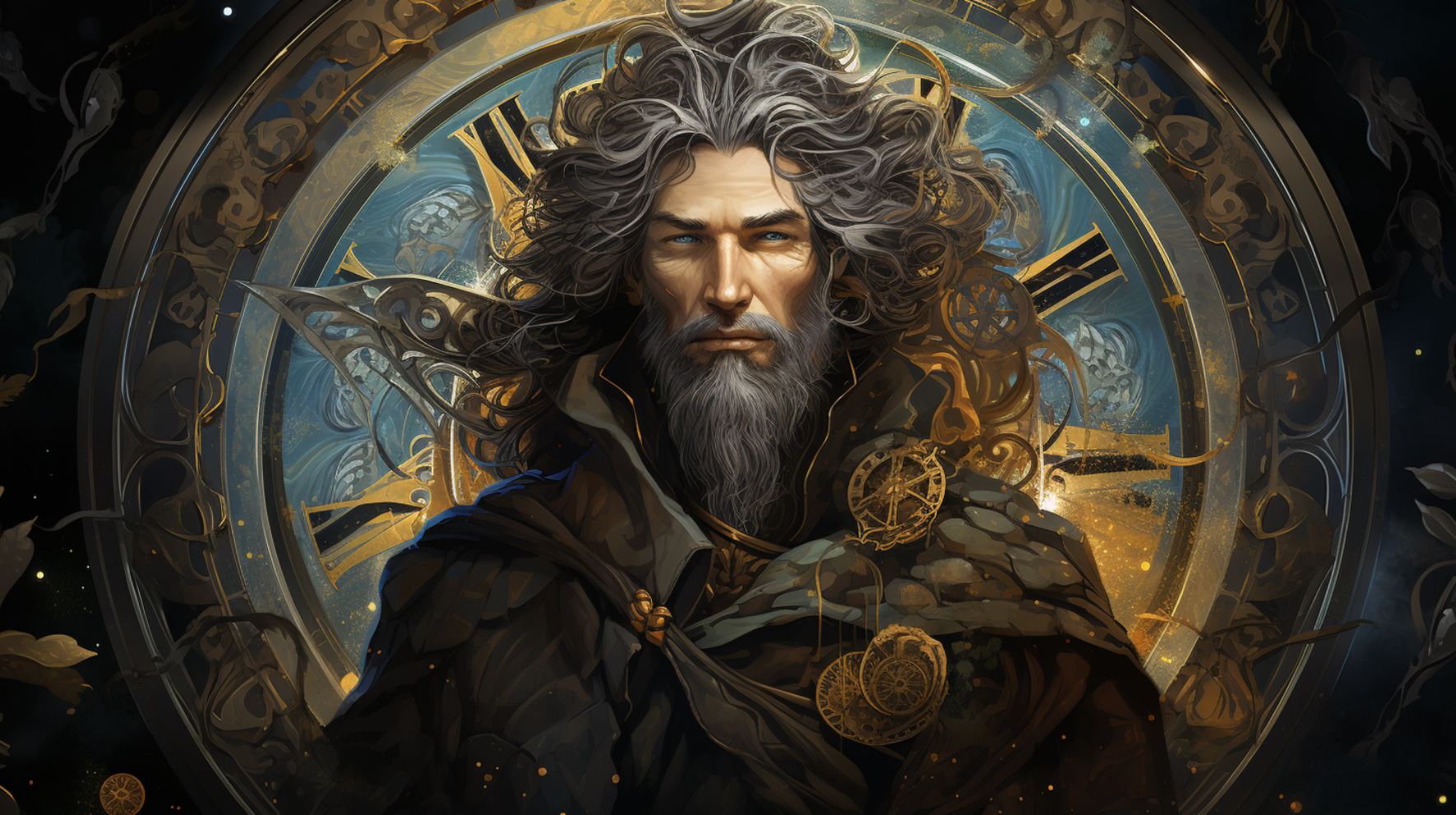
Intrigue and conflict arise when Gwydion fab Don, a prominent figure in Welsh mythology, steals Ceridwen’s pigs, which originally belonged to Arawn. This act of theft triggers a chain of events that leads to war and upheaval.
The pigs, being an integral part of the mystical world, symbolize the delicate balance between realms and the consequences of disrupting that balance.
The Battle of the Trees and Arawn’s Losses
Arawn’s losses in the Battle of the Trees further display the challenges and sacrifices he faces as the king of Annwn.
The battle takes place due to Amaethon’s theft of three significant items from Arawn: a dog, a lapwing, and a white stag. The conflict escalates as trees come to life to aid Arawn’s army, causing severe consequences for both sides.
This intense battle showcases Arawn’s determination to protect his realm and the high stakes involved in maintaining the delicate balance between worlds.
- Arawn’s involvement in the Battle of Annwn brings forth the complexities of his character as a ruler, warrior, and guardian of his realm.
- The theft of Ceridwen’s pigs by Gwydion fab Don leads to a series of conflicts and symbolizes the disruption of the mystical balance within Annwn.
- The Battle of the Trees showcases Arawn’s resilience and the sacrifices he endures to defend his kingdom.
As we delve deeper into the tales of Arawn and the Battle of Annwn, we begin to appreciate the intricate layers of Celtic mythology and the profound significance of Arawn’s role in maintaining the delicate equilibrium between realms.
This epic battle not only highlights Arawn’s strength and determination but also sheds light on the interconnectedness of the mystical world and the consequences of disrupting its harmony.
Arawn’s Influence in Welsh Folklore
Arawn, the Celtic god and king of Annwn, holds a significant place in Welsh folklore.
Within this rich tapestry of legends, two particular aspects stand out: the mention of the Cŵn Annwn or Dogs of Annwn, and Arawn’s association with hunting and migration.
The Cŵn Annwn: Dogs of Annwn
In Welsh folklore, the Cŵn Annwn are mythical dogs closely linked to Arawn and his realm.
These spectral canines are said to roam the skies during autumn, winter, and early spring. Their haunting howls are often associated with the sound of migrating geese, and they are believed to pursue wandering spirits towards Annwn.
This connection between the Cŵn Annwn and Arawn adds an eerie and fascinating element to the mythology surrounding the Celtic god.
Arawn’s Association with Hunting and Migration
Arawn’s role as a hunter and his association with migration lend further depth to his character in Welsh folklore. In tales and legends, Arawn embodies the spirit of the hunt, guiding hunters through the wilderness and ensuring a bountiful catch.
Additionally, his influence extends to the realm of migration, as his presence is felt during the seasonal movements of birds and animals, marking the transitions of nature.
Through the intertwining threads of the Cŵn Annwn and his connection to hunting and migration, Arawn’s influence in Welsh folklore remains enigmatic and captivating.
These aspects further showcase the intricate layers of mythology that surround this intriguing Celtic god.
Arawn in Arthurian Legend and Contemporary Literature
Arawn, the Celtic god of Annwn, has left a significant mark on Arthurian legend and contemporary literature. His character is intricately woven into the fabric of Sir Gawain and the Green Knight, as well as The Chronicles of Prydain.
Parallels between Pwyll and Arawn in Sir Gawain and the Green Knight
Within the renowned Arthurian tale of Sir Gawain and the Green Knight, we find striking parallels between Arawn and Pwyll. Just as Pwyll assumes the role of Arawn for a year, Gawain takes on a similar transformative experience while encountering the enigmatic Green Knight.
Both Pwyll and Gawain must navigate treacherous challenges and prove themselves in exchange for ultimate growth and triumph.
Arawn’s Adaptation in The Chronicles of Prydain
Arawn’s allure and influence extend beyond Arthurian legends and into the captivating world of The Chronicles of Prydain. This series draws inspiration from the Mabinogion, skillfully adapting Arawn’s character as the main antagonist.
Though certain modifications are made to suit the narrative, the essence of Arawn’s cunning, power, and connection to Annwn remains a central aspect in the captivating adventures within this literary masterpiece.
In summary, Arawn, the Celtic god, has left an indelible imprint on both Arthurian legend and contemporary literature. The parallels between Pwyll and Arawn in Sir Gawain and the Green Knight shed light on their transformative journeys, while The Chronicles of Prydain effectively adapts Arawn’s character as a formidable antagonist.
These captivating narratives further reinforce Arawn’s significance and enduring legacy in the realm of mythology and literature.
Araw’s Connection to the Gaulish God Cernunnos
Arawn, the Celtic god of Annwn, has intrigued scholars with his possible association with the Gaulish god Cernunnos. While the connection is not explicitly stated in the mythology, certain similarities and shared attributes have led to intriguing speculations.
Let’s delve into Arawn’s associations with the Gaulish deity and explore their potential significance.
Exploring Arawn’s Associations with the Hunt
One aspect that links Arawn to Cernunnos is their shared connection with hunting. Arawn, as the ruler of Annwn, is often depicted as a skilled hunter, roaming through the forests and leading the wild hunt.
This correlation aligns with Cernunnos, the Gaulish deity associated with the hunt, fertility, and the wilderness. Both deities embody the primal aspect of the natural world and seize the exhilaration of the hunt.
Arawn’s role as a hunter is particularly highlighted in the Mabinogion, where his encounters with other characters revolve around this theme. His significance in the Battle of the Trees showcases his prowess in the hunt, as he engages in a struggle prompted by the theft of his dog, bird, and white stag by Amaethon.
This conflict further emphasizes his connection to primal forces and the divine hunt.
In Gaulish depictions, Cernunnos is often depicted with antlers or horns, symbolizing his close association with wild animals and the hunt. Although not explicitly mentioned in relation to Arawn, this iconography resonates with his character as a deity of the hunt and guardian of the natural world.
The Symbolic Import of the Hunt in Arawn’s Mythos
The hunt, both for Arawn and Cernunnos, extends beyond the physical act of pursuing prey. It carries a deeper symbolic meaning tied to the cycles of life, death, and rebirth.
The hunt represents the eternal struggle and transformation that characterizes existence and the constant renewal of nature.
Arawn’s association with the hunt signifies the cyclical nature of life and the primal forces that govern the wilderness. Just as Cernunnos embodies the fertility and abundance of the natural world, Arawn’s connection to the hunt encapsulates the transient yet constant cycle of creation, destruction, and rebirth.
In conclusion, Arawn’s connection to the Gaulish god Cernunnos, while not explicitly stated, presents intriguing possibilities rooted in their shared associations with the hunt. Both deities symbolize the untamed forces of the natural world and the cyclical nature of life.
By examining Arawn’s portrayals as a hunter in the Mabinogion and his parallel attributes with Cernunnos, we gain a deeper appreciation for the depths of Celtic mythology and the enigmatic nature of these ancient gods.
.







